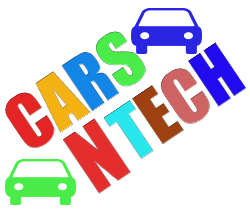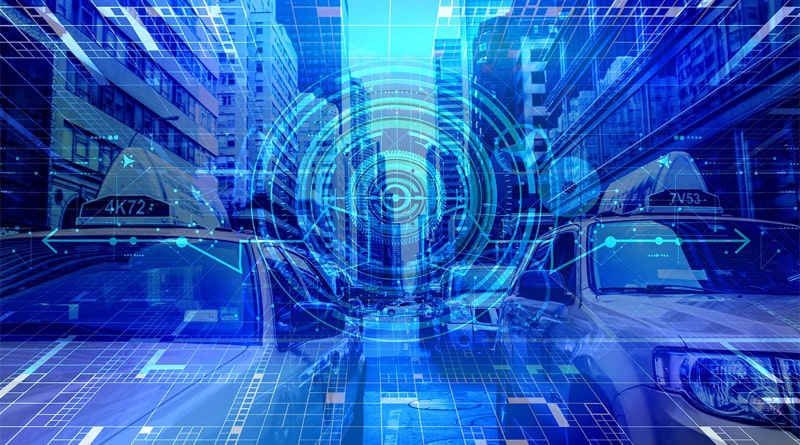Vehicular Automation Technology: Shaping the Future of Transportation
Imagine a world where vehicles navigate the roads effortlessly, communicate with each other, and make decisions without human intervention. This is the exciting realm of vehicular automation technology. Combining mechatronics, artificial intelligence, and multi-agent systems, this technology aims to revolutionize the way we travel. In this article, we will explore the various aspects of vehicular automation, its current applications, challenges, and the future it holds.
Table of Contents
- Introduction
- Understanding Vehicular Automation
- The Evolution of Autonomous Vehicles
- The Role of Artificial Intelligence
- Advancements in Autonomous Systems
- The Importance of Perception Systems
- Advanced Driver-Assistance Systems
- Navigation Systems for Autonomous Vehicles
- The Shift Towards Electric Vehicles
- Considering User Preferences and Needs
- Building Smart Cities for Autonomous Vehicles
- Technological Connectivity and User Integration
- Addressing Concerns and Challenges
- The Future of Vehicular Automation
- Conclusion
- FAQs
1. Introduction
Vehicular automation technology represents a paradigm shift in transportation. By incorporating advanced technologies, vehicles can perform complex tasks and assist human operators, or even function autonomously. These technologies are being implemented in various vehicles, such as self-driving cars, unmanned surface vehicles, autonomous trains, and even planetary rovers.
2. Understanding Vehicular Automation
Vehicular automation refers to the use of mechatronics, artificial intelligence, and multi-agent systems to enhance the capabilities of vehicles. These intelligent features enable vehicles to perform challenging tasks, particularly in navigation, easing the burden on human operators. Depending on the level of automation, vehicles can be categorized as semi-autonomous or fully autonomous.
3. The Evolution of Autonomous Vehicles
The development of vehicular automation has been greatly influenced by advancements in technology, especially the integrated circuit. Over time, manufacturers and researchers have incorporated automated functions into vehicles, gradually enhancing their capabilities. Today, we witness the emergence of self-driving cars, unmanned aerial vehicles, and advanced autopilots, all driven by automation technology.
4. The Role of Artificial Intelligence
Artificial Intelligence (AI) plays a crucial role in realizing fully autonomous vehicles. The journey toward full autonomy involves incremental steps, with lower levels of automation being tested and implemented before progressing to higher levels. AI, coupled with machine learning, enables vehicles to control various autonomous systems and processes, such as navigation, collision avoidance, and steering.
5. Advancements in Autonomous Systems
Autonomous vehicle manufacturers are continuously researching and developing AI specifically tailored for autonomous vehicles. They are designing and implementing autonomous systems that can work harmoniously to achieve higher levels of autonomy. These systems include advanced driver-assistance systems, which encompass features like parallel parking and emergency braking.
6. The Importance of Perception Systems
One of the critical components of autonomous vehicles is the perception system. It scans the surrounding environment continuously, mimicking human perception to identify potential threats. The perception system’s primary goal is to detect hazards and prepare the vehicle to handle or mitigate them. Various technologies, such as radar, lidar, sonar, and image processing, contribute to the detection capabilities of the perception system.
7. Advanced Driver-Assistance Systems
Advanced driver-assistance systems provide a bridge between current vehicles and fully autonomous ones. These systems assist drivers in specific actions, such as parking and braking, to enhance safety and convenience. Navigation systems also play a crucial rolein the development of autonomous vehicles. They can utilize existing navigation systems like GPS and incorporate additional capabilities to detect traffic congestion, tolls, and road construction. Vehicle-to-infrastructure communication can further enhance navigation by providing real-time information.
9. The Shift Towards Electric Vehicles
With the rise of autonomous vehicles, there is a growing emphasis on electric vehicles (EVs). The integration of autonomous systems requires high-quality electric cars capable of supporting these advanced technologies. However, many traditional vehicle components, such as automatic transmissions and airbags, can still be used in autonomous vehicles.
10. Considering User Preferences and Needs
Autonomous vehicle manufacturers also prioritize user preferences and needs. They aim to minimize travel time, accommodate specific routes, and cater to individuals with disabilities. Moreover, the environment surrounding autonomous vehicles needs to have enhanced connectivity to support their operations. This has prompted many urban areas to consider transitioning into smart cities to provide a suitable infrastructure for autonomous vehicles.
11. Building Smart Cities for Autonomous Vehicles
Smart cities, characterized by advanced technological connectivity and infrastructure, are becoming a necessity for autonomous vehicles. These cities incorporate intelligent transportation systems and communication networks that facilitate seamless interactions between vehicles and their environment. By integrating various technologies, smart cities create an environment conducive to the efficient functioning of autonomous vehicles.
12. Technological Connectivity and User Integration
As autonomous vehicles evolve, they are expected to establish connections with users’ smartphones and other technological devices. This integration allows users to interact with the vehicle seamlessly. For example, users can remotely monitor the vehicle’s status, summon it to their location, or even schedule pickups and drop-offs. The advent of smartphones has paved the way for such technological connectivity.
13. Addressing Concerns and Challenges
While vehicular automation offers numerous benefits, there are also concerns that need to be addressed. One of the main concerns is safety. Autonomous vehicles must undergo rigorous testing and ensure flawless perception systems to prevent accidents and protect human lives. Additionally, there are challenges related to scalability and robustness that need to be overcome for autonomous technology to become widespread.
14. The Future of Vehicular Automation
The future of vehicular automation is promising. As technology continues to advance, we can expect further developments in AI, perception systems, and autonomous functionalities. The integration of autonomous vehicles into our daily lives will transform transportation, making it more efficient, safer, and convenient.
15. Conclusion
Vehicular automation technology is reshaping the way we envision transportation. By leveraging mechatronics, artificial intelligence, and multi-agent systems, vehicles can perform complex tasks autonomously or assist human operators. The journey toward full autonomy is marked by advancements in perception systems, AI, and the integration of autonomous subsystems. Although challenges remain, the future of vehicular automation holds immense potential for revolutionizing the way we travel.
FAQs
- Are autonomous vehicles already on the roads?
- Yes, autonomous vehicles are being tested and deployed on public roads in certain regions. However, widespread adoption is still in progress.
- How do perception systems in autonomous vehicles work?
- Perception systems utilize technologies like radar, lidar, sonar, and image processing to detect and analyze the surrounding environment, identifying potential hazards and obstacles.
- What role does artificial intelligence play in autonomous vehicles?
- Artificial intelligence enables autonomous vehicles to control various systems and processes, making decisions based on real-time data and machine learning algorithms.
- What are the benefits of vehicular automation?
- Vehicular automation can improve road safety, enhance traffic efficiency, and provide convenience for passengers. It also has the potential to reduce congestion and environmental impact.
- Will autonomous vehicles replace human drivers entirely?
- While the goal is to achieve full autonomy, there will still be a transition periodwhere autonomous vehicles coexist with human drivers. The level of automation and the regulations surrounding autonomous vehicles will determine the extent to which human drivers are replaced.
In conclusion, vehicular automation technology is a revolutionary force in the transportation industry. With the integration of mechatronics, artificial intelligence, and multi-agent systems, vehicles are becoming more intelligent and capable of autonomous operation. While there are still challenges to overcome, the future of vehicular automation holds immense promise for safer, more efficient, and convenient transportation systems. Embracing this technology will pave the way for a new era of mobility.

